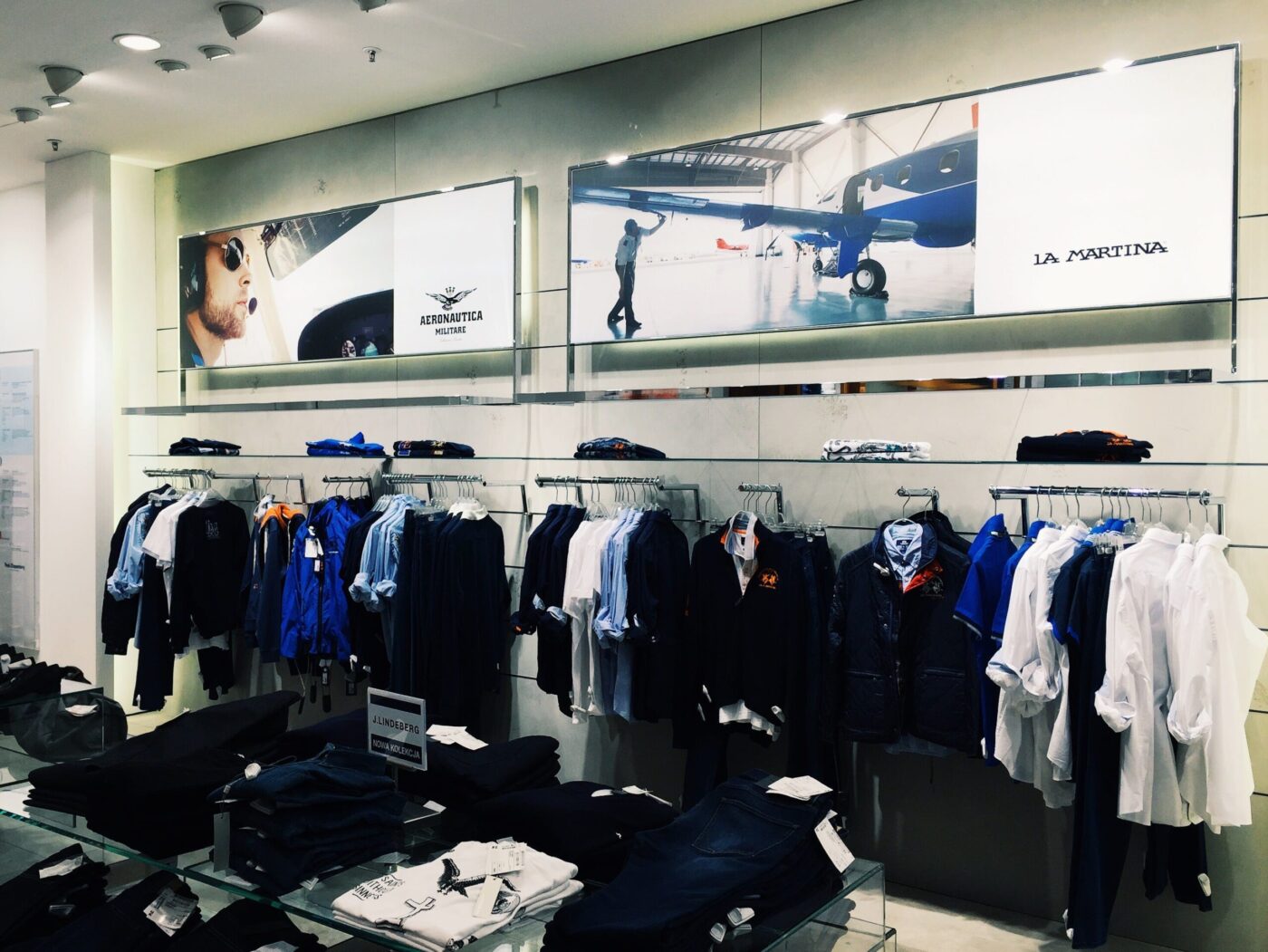The Future of Retail: 13 Trends and Technologies Shaping the Industry
December 7, 2023 5 min read

The retail industry is no stranger to disruption over the last couple of decades: first with the rise of online and mobile shopping and then with the uncertainty of the pandemic. If retailers are anything, they’re adaptive! Retail continues to thrive through all these changes, with a global growth rate of 3.5% annually.
If you’re a retailer who wants to stay on top of the latest trends and technologies shaping the industry, you’ve come to the right place. We’ll look at 13 emerging and evolving trends, including AI-powered personalization and contactless shopping, along with their impact on the retail sector so you can determine which approaches you should add to your strategy.
Contactless and Cashless Payments
Contactless and cashless payments like Apple Pay and Google Pay streamline transaction processes, making purchasing faster and eliminating the need to handle cash. This improves customer experience by reducing waiting times while allowing companies to handle a higher volume of transactions. Cashless payments also reduce the handling and storage of physical money, enhancing security and reducing the risk of theft.
Augmented Reality (AR) and Virtual Reality (VR) Shopping Experiences
AR and VR are a serious boon to customer shopping experiences. Allow customers to virtually try on clothes, visualize furniture in their homes, or walk through a virtual store from the comfort of their living room. And in-store AR can transform a regular shop into a creative wonderland! These technologies make customers happy and ultimately boost sales, too.
Artificial Intelligence (AI) and Machine Learning in Retail
Artificial Intelligence (AI) and Machine Learning (ML) can help retailers in multiple ways — from analyzing vast amounts of data to predicting trends, forecasting demand, and optimizing pricing for better inventory management. It can also create opportunities for personalized marketing (see more in the next section) by learning from each customer interaction and tailoring product recommendations.
Personalization at Scale
Personalization has been the name of the game since the advent of digital marketing, but retailers are only beginning to use it to its full advantage. Using marketing tools to help with personalization, you can create a unique and tailored shopping experience for each customer. AI and ML allow you to parse through vast amounts of customer data to uncover individual purchasing patterns, preferences, and behaviors — which you can employ in your marketing campaigns to garner more sales.
Sustainability and Eco-Friendly Practices
Sustainability is increasingly becoming a focal point within the retail sector as a response to growing consumer demand for eco-friendly products. Shoppers are demonstrating a willingness to support brands that align with their personal values, particularly when it comes to environmental stewardship. By offering products that are ethically sourced, environmentally friendly, or that contribute to social good, retailers can tap into the growing market of conscious consumers. This trend towards sustainability doesn’t just enrich a company’s brand image; it also opens up new avenues for revenue and customer loyalty.
Voice Commerce and Smart Speakers
The proliferation of smart speakers, like Amazon Echo or Google Home, has made shopping even more convenient for consumers. Shoppers can search for products, compare prices, and make purchases with voice commands. By integrating your online platforms with voice-activated devices, you can deliver a unique, hands-free shopping experience.
Social Commerce
Social commerce, powered by influencer marketing, is another transformational trend that’s redefining the way retailers do business. This strategy harnesses the persuasive power of social media influencers to drive sales and improve brand visibility. Instead of traditional store browsing, customers can now shop directly from their social media feeds, enabling retailers to harness the interactive potential of platforms like Instagram, Facebook, and Pinterest.
Influencer Marketing
Influencers not only endorse products but also create authentic narratives around them. This relatability and authenticity appeal to consumers, especially millennials and Gen Z, who value peer recommendations over traditional advertising. The result is a boost in brand awareness, customer engagement, and, ultimately, sales.
Robotics and Automation in Retail Operations
The integration of robotics and automation in retail operations is another cutting-edge trend driving efficiency and improving bottom lines. Robotic process automation (RPA) can streamline various routine tasks such as inventory management, sorting, and pricing, thereby reducing the need for human intervention, cutting costs, and minimizing errors. Automated customer service bots can handle customer inquiries 24/7, delivering rapid, accurate responses, which heightens customer satisfaction and frees up staff for more complex tasks. And don’t forget about autonomous delivery systems and self-checkout kiosks, too: these can lend a futuristic edge to retail while boosting efficiency.
Data Privacy and Customer Trust
Data privacy and customer trust have become paramount. Consumers today are more conscious of their digital footprint and the personal information they share with businesses. As retailers leverage technology for personalized marketing or predictive shopping, they also amass vast amounts of customer data, thereby intensifying the need for robust data security measures. Breaching this trust can lead to detrimental effects, including damage to brand reputation, loss of customer loyalty, and strict penalties under data protection laws.
Omnichannel Retail
You’re likely already aware of the importance of delivering a unified brand experience across all touchpoints, be it in-store, online, or through mobile apps. Despite the surge in online shopping, omnichannel retail remains crucial. It caters to the shopping preferences of diverse customer segments and enhances customer loyalty by providing flexibility, convenience, and a personalized shopping experience.
Supply Chain Resilience and Localization
In the wake of recent global disruptions, supply chain resilience, and localization have emerged as top priorities for retailers. The ability to absorb, adapt, and rapidly recover from disruptions is critical for maintaining business continuity and customer satisfaction.
Localization – the practice of adapting operations to the local markets in which a company operates – complements this resilience by facilitating quicker decision-making and reducing lead times. By embracing localization, retailers can ensure a more reliable supply of goods, better forecast demand, and tailor their offerings to local customer preferences.
In an era where consumer expectations are higher than ever, and the margin for error is slim, a resilient and localized supply chain can provide a significant competitive advantage. It allows retailers to navigate uncertainties, minimize disruptions, and consistently deliver on their brand promise, thus fostering long-term customer loyalty and driving sustainable growth.
Pop-Up Stores and Experiential Retail
Pop-up stores are temporary, interactive spaces that allow brands to create a unique, personalized environment where they can engage consumers face-to-face. These stores offer the novelty and exclusivity that today’s consumers crave, and they provide a platform for brands to showcase their creativity and innovation.
Meanwhile, experiential retail goes beyond mere transactions, focusing on delivering memorable experiences that resonate with consumers on an emotional level. It’s all about crafting immersive, engaging in-store experiences that captivate consumers and foster a deeper connection with the brand. These strategies are crucial in retail because they combine the tactile and sensory appeal of physical shopping with the novelty and excitement of an event. As a result, they not only drive foot traffic and boost sales but also enhance customer loyalty and brand perception. They represent an innovative way for retailers to differentiate themselves in a crowded market, create buzz, and make a lasting impression on consumers.







